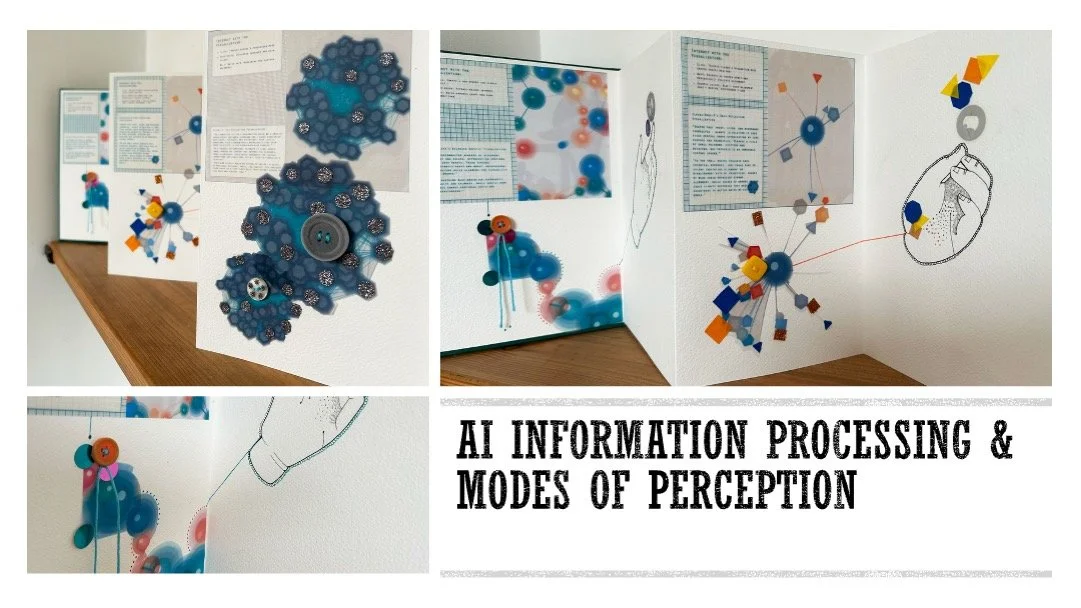Below, you’ll find an overview of the visual process research and outcomes behind this collaborative artwork. I begin by generating sounds through prompts in Adobe Audition and create hand gestures using Adobe Firefly. These digital prompts, generated by each bot, to interpret their own particular information processing modes, are then interpreted into hand-drawn outcomes. The shapes and colours for the animated visualisations are generated by Claude, and I bring all these elements together to produce an animated audio soundscape, representing the information processing of different bots.
This project is designed as both a physical and digital experience, using traditional sketchbooks alongside users’ personal mobile phones. The scale of these interactions is important to me; generally, I find that smaller, more intimate formats have a greater emotional impact. When something is closer to us—physically and emotionally—we tend to form stronger connections and attach deeper meaning. ( the “proximity effect.” For example, people often form deeper bonds with objects they can touch, manipulate, or keep close, as opposed to distant or large-scale experiences.)
